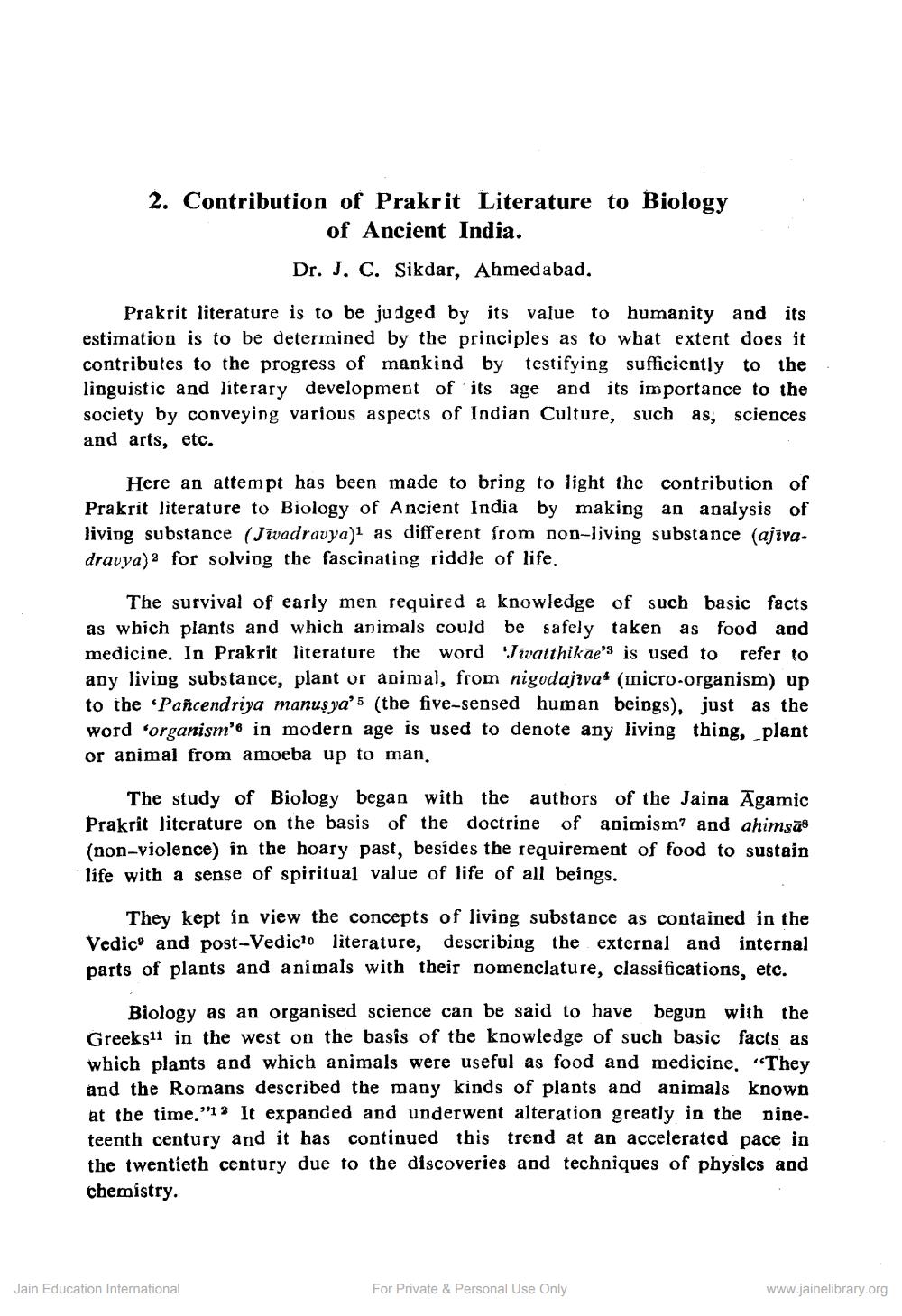________________
2. Contribution of Prakrit Literature to Biology
of Ancient India. Dr. J. C. Sikdar, Ahmedabad.
Prakrit literature is to be judged by its value to humanity and its estimation is to be determined by the principles as to what extent does it contributes to the progress of mankind by testifying sufficiently to the linguistic and literary development of its age and its importance to the society by conveying various aspects of Indian Culture, such as; sciences and arts, etc.
Here an attempt has been made to bring to light the contribution of Prakrit literature to Biology of Ancient India by making an analysis of living substance (Jīvadravya)' as different from non-living substance (ajiva. dravya) 2 for solving the fascinating riddle of life,
The survival of early men required a knowledge of such basic facts as which plants and which animals could be safely taken as food and medicine. In Prakrit literature the word 'Jivatthikae's is used to refer to any living substance, plant or animal, from nigodajiva* (micro-organism) up to the Pancendriya manusya'5 (the five-sensed human beings), just as the word 'organism'o in modern age is used to denote any living thing, plant or animal from amoeba up to man.
The study of Biology began with the authors of the Jaina Agamic Prakrit literature on the basis of the doctrine of animism? and ahimsās (non-violence) in the hoary past, besides the requirement of food to sustain life with a sense of spiritual value of life of all beings.
They kept in view the concepts of living substance as contained in the Vedice and post-Vedicto literature, describing the external and internal parts of plants and animals with their nomenclature, classifications, etc.
Biology as an organised science can be said to have begun with the Greeksli in the west on the basis of the knowledge of such basic facts as which plants and which animals were useful as food and medicine. "They and the Romans described the many kinds of plants and animals known at the time."1% It expanded and underwent alteration greatly in the nine. teenth century and it has continued this trend at an accelerated pace in the twentieth century due to the discoveries and techniques of physics and chemistry.
Jain Education International
For Private & Personal Use Only
www.jainelibrary.org




